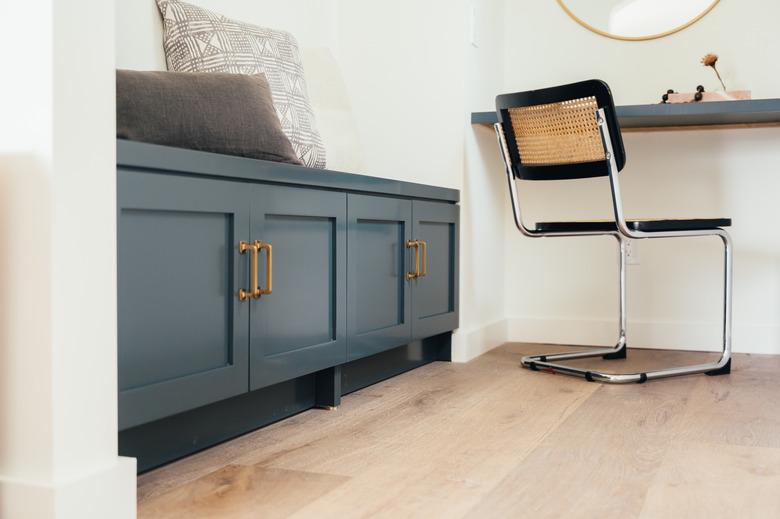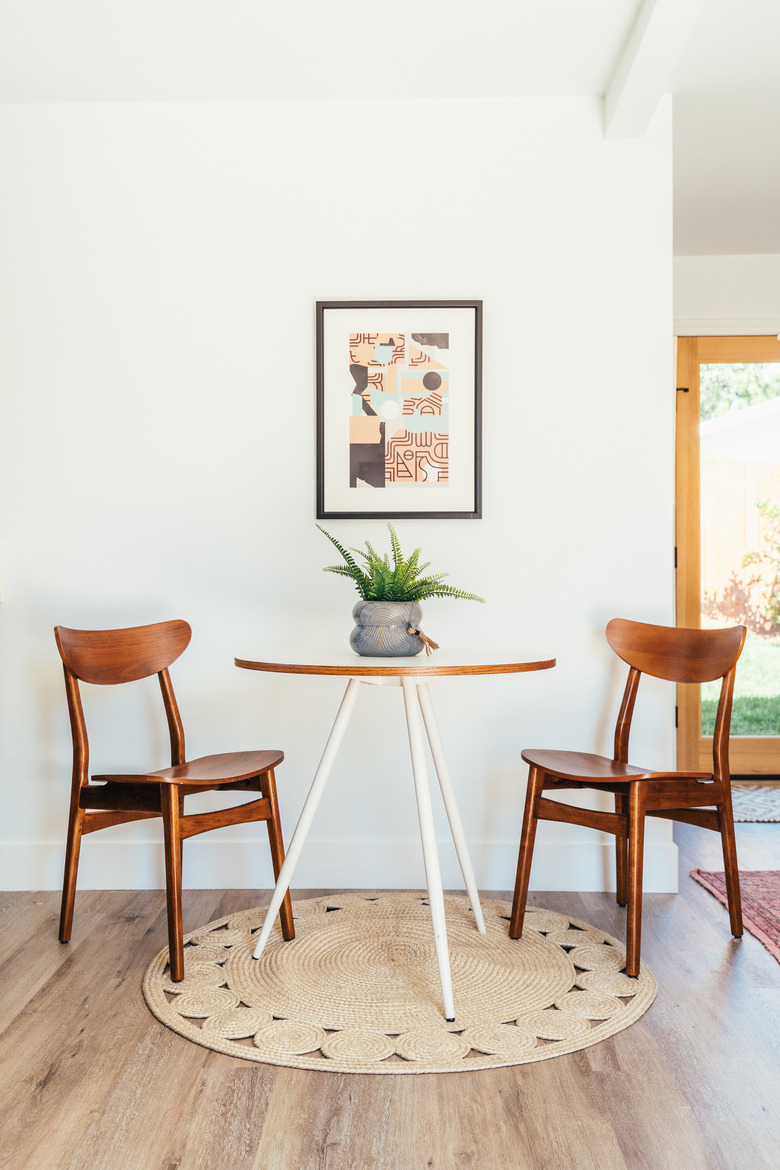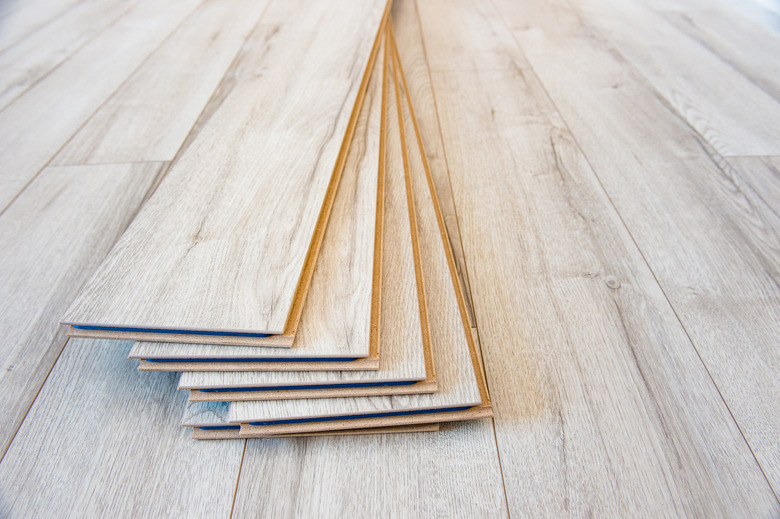A Homeowner's Guide To Laminate Flooring
Laminate flooring is a versatile synthetic flooring product made from several layers of material fused (laminated) together in planks or tiles. Perstorp, a Swedish company that has been producing flooring since 1923, developed laminate flooring in 1977 and began selling it under the brand name Pergo. For some time, the brand name was used to represent all laminate flooring, and while it still has the highest name recognition, it is by no means the only manufacturer.
Laminate flooring usually consist of four layers:
- The top layer is a melamine wear or overlay layer. Along with giving the flooring luster, it seals and protects the surface and shields the decorative paper layer from harmful ultraviolet rays that could fade the color.
- Beneath the wear layer is the decorative paper layer, a photographic applique printed with a design. This is the layer than can give the planks the appearance of wood, stone, tile, or marble. You can even find planks with designs such as leaves, grass, paint splatters, or artwork.
- The third layer is made from either particle board or high-density fiberboard (HDF), and it gives the plank stability and strength. On most products, the edges are milled with interlocking profiles so the planks snap together for installation.
- The bottom layer, called balance paper, seals the back of the planks, helping preserve its dimensional stability and keeping the board straight.
Advantages of Laminate Flooring
Advantages of Laminate Flooring
Laminate is a popular flooring choice option for a number of reasons. One of the advantages of laminate flooring is that it can be manufactured to effectively mimic hardwood flooring (this type is also called laminate wood flooring), as well as other materials. Laminate flooring is also easier to install and maintain than hardwood flooring, and it's less expensive.
While not quite as durable as ceramic tile, laminate flooring resists scratches, dents and stains, so it can withstand rough wear from kids and pets. It doesn't fade or yellow in sunlight, and it stands up to moisture almost as well as hardwood flooring does, too. It's easy to clean, and it can be installed over an existing floor.
Drawbacks of Laminate Flooring
Drawbacks of Laminate Flooring
Of course, every flooring material has its cons, too. Unlike hardwood flooring, which can be sanded or buffed, laminate is difficult to repair when scratched, chipped, or otherwise damaged.
You must install padding under laminate floors to reduce noise, and even so it sounds hollow when walked on. Laminate flooring can feel hard and quite slippery underfoot. Moisture can penetrate between the seams and permanently damage the fiberboard underneath the laminate, making it a poor choice for bathrooms, laundry rooms, and other areas with high moisture.
Finally, houses with laminate flooring have a lower resale value than those with hardwood, due to the perception that it is a lesser-quality material.
Laminate Flooring Options
Laminate Flooring Options
Laminate is available in wood laminate planks of varying widths, tiles, and squares. When shopping, you'll come across different choices, grouped here by assembly method, appearance and finish, thickness, and AC rating.
Installing Laminate Flooring
Installing Laminate Flooring
Laminate floors are manufactured with interlocking tongue and groove assembly to make installation easier. There are a number of different types.
- Glueless click lock: Most laminate flooring options fall into this category, which is easy and quick to install.
- Glued: This type of laminate flooring requires you to glue the joints together. This results in a very strong floor, but installation time is longer, making it more costly to have installed.
- Pre-glued: The joints already have glue on them, but you may need to moisten them to activate the adhesive before joining the planks.
Avoid wide planks flooring materials unless you're absolutely certain your substrate is perfectly flat. On uneven floors, wide planks are harder to snap together, the end joints don't stay flush with one another, and you'll end up with more gaps beneath the planks, which you will feel when you're walking across the floor.
Underlayment for Laminate Flooring
Underlayment for Laminate Flooring
Laminates should be installed over a thin layer of foam padding that absorbs sound and makes the floor more comfortable underfoot. Some laminate floors are sold with this underlayment attached. Buying underlayment separately lets you choose the type you want, and may result in a lower cost.
Appearance and Finish Options
Appearance and Finish Options
Because laminates all have a photo layer, a laminate floor can look like almost anything—wood-looking floors, stone, tile flooring, or even marble. And within those categories, there's an almost limitless range of color and texture. You'll find a number of surface finishes:
- Smooth: A plain finish that looks like a layer of varnish on hardwood. You may have a choice of high-, medium-, or low-gloss finish.
- Embossed in registration (EIR). A type of embossing that exactly matches the grain of the wood in the photo. This gives the laminate surface not only the appearance of wood, but also the texture.
- Embossed and/or textured. This style doesn't match the grain in the printed image but it still fool the eye somewhat.
- Distressed or hand scraped. Gives the laminate an antiqued appearance due to the nature of the photo layer. (It isn't actually hand-scraped, by the way!)
If your laminate flooring is going to be in a high-traffic area or get a lot of use from kids and pets, choose a product with a distressed or hand-scraped patina, a varied grain pattern, or a low-gloss finish. It will look better for longer.
Laminate Floor Thickness
Laminate Floor Thickness
You'll find laminates in thicknesses ranging from 6 to 12 mm (roughly 1/4 to 1/2 inches). Manufacturers may include the thickness of the underlayment in calculating that thickness. While the thickness has no impact on dent resistance, thicker laminate is easier to install, echoes less when walked on, and looks and feels like a higher-quality product. It's advisable to choose a product that's 10 to 12 mm thick. Your new floors will feel like it's better quality, and the thickness will help the laminate flooring resist bending that can result if the subfloor is uneven and not perfectly level.
AC Rating for Laminate Flooring
AC Rating for Laminate Flooring
"AC" means Abrasion Class. Generally, the higher the laminate's AC rating, the higher its price. Here's what the ratings signify. Pay attention to them, because you can avoid wasting money by selecting a laminate with an AC rating that best suits your traffic volume.
- AC 1: For light residential use only—closets and bedrooms with light traffic.
- AC 2: Designed for moderate foot traffic. Suitable for spaces that don't get much wear and tear, such as dining rooms and living rooms.
- AC 3: Well-suited for heavy traffic in homes and even commercial spaces with light traffic, such as offices and hotel rooms.
- AC 4: For more heavily trafficked commercial spaces like offices, boutiques, and cafés.
- AC 5: Withstands the busiest commercial traffic.
Laminate Wood Flooring Cost
Laminate Wood Flooring Cost
On average, laminate costs between $1 and $3.25 per square foot. If you prefer to have it installed instead of doing it yourself, add about $2 per square foot.
Quality of Laminate Wood Floors
Quality of Laminate Wood Floors
The store should have samples of installed flooring options, and you can judge the quality of the product largely by simply looking at these samples. Check the alignment of the boards for gaps or unevenness. Quality products lock together seamlessly, creating a flat, smooth surface.
Examine the quality of the image for sharpness and clarity—better flooring uses high-resolution imagery. Cheap laminates often show joints in the image itself, so the plank appears to be made of multiple boards. Also, see if you can detect the pattern repeat. The patterns on good quality laminates floors have considerable variety to help them look natural.
Other criteria can be determined by talking to a salesperson or reading the product literature:
- Find out if the material is manufactured under direct or high pressure—high-pressure laminate flooring is usually better quality.
- Ask about the wear surface. The standard is aluminum-oxide enhanced urethane—cheaper urethanes are made with larger particles that cloud this layer.
- Make sure the laminate flooring has been UV-treated, which protects that printed image beneath.
- Check that the third layer is HDF rather than particle board—HDF is denser and resists buckling.
Finally, look for a seal of approval from the North American Laminate Flooring Association (NALFA). NALFA-certified flooring undergoes rigorous testing to assess its performance under circumstances that might dent it, and to ensure it resists water, staining, and sunlight.


